第37章 MONEY OR SIMPLE CIRCULATION(18)
But the "ideal"existence of gold within the confines of its function comes into conflict with its real existence.In the course of circulation some gold coins have lost more of their metal content,others less,and one sovereign is now indeed worth more than another.Since they are however equally valid while they function as coin --the sovereign that weighs a quarter of an ounce is valued no more highly than the sovereign which only represents a quarter of an ounce --some unscrupulous owners perform surgical operations on sovereigns of standard weight to achieve the same result artificially which circulation has brought about spontaneously in the case of lighter coins.Sovereigns are clipped and debased and the surplus gold goes into the melting pot.When 4,6721/2gold sovereigns placed on the scales weigh on the average only 800ounces instead of 1,200,they will buy only 800ounces of gold on the gold market:in other words,the market-price of gold has risen above the mint-price.All sovereigns,even those retaining the standard weight,would be worth less as coin than in the shape of bars.Sovereigns of standard weight would be reconverted into bars,a form in which a greater quantity of gold has a greater value than a smaller quantity of gold.When the decline of the metal content has affected a sufficient number of sovereigns to cause a permanent rise of the market-price of gold over its mint-price,the coins will retain the same names of account but these will henceforth stand for a smaller quantity of gold.In other words,the standard of money will be changed,and henceforth gold will be minted in accordance with this new standard.Thus,in consequence of its idealisation as a medium of circulation,gold in its turn will have changed the legally established relation in which it functioned as the standard of price.A similar revolution would be repeated after a certain period of time;gold both as the standard of price and the medium of circulation in this way being subject to continuous changes,so that a change in the one aspect would cause a change in the other and vice versa.This accounts for the phenomenon mentioned earlier,namely that,as the history of all modern nations shows,the same monetary titles continued to stand for a steadily diminishing metal content.The contradiction between gold as coin and gold as the standard of price becomes also the contradiction between gold as coin and gold as the universal equivalent,which circulates not only within the boundaries of a given territory but also on the world market.
As a measure of value gold has always retained its full weight,because it has served only nominally as gold.When serving as an equivalent in the separate transaction C --M,gold reverts from movement immediately to a state of rest;but when it serves as a coin its natural substance comes into constant conflict with its function.The transformation of gold sovereigns into nominal gold cannot be entirely prevented,but legislation attempts to preclude the establishment of nominal gold as coin by withdrawing it from circulation when the coins in question have lost a certain percentage of their substance.According to English law,for instance,a sovereign which has lost more than 0.747grain of weight is no longer legal tender.
Between 1844and 1848,48million gold sovereigns were weighed by the Bank of England,which possesses scales for weighing gold invented by Mr.Cotton.
This machine is not only able to detect a difference between the weights of two sovereigns amounting to one-hundredth of a grain,but like a rational being it flings the light-weight coin onto a board from which it drops into another machine that cuts it into pieces with oriental cruelty.
Under these conditions,however,gold coins would not be able to circulate at all unless they were confined to a definite sphere of circulation where they wear out less quickly.In so far as a gold coin in circulation is worth a quarter of an ounce,whereas it weighs only a fifth of an ounce,it has indeed become a mere token or symbol for one-twentieth of an ounce of gold,and in this way the process of circulation converts all gold coins to some extent into mere tokens or symbols representing their substance.
But a thing cannot be its own symbol.Painted grapes are no symbol of real grapes,but are imaginary grapes.Even less is it possible for a light-weight sovereign to be the symbol of a standard-weight sovereign,just as an emaciated horse cannot be the symbol of a fat horse.Since gold thus becomes a symbol of itself but cannot serve as such a symbol it assumes a symbolic existence --quite separate from its own existence --in the shape of silver or copper counters in those spheres of circulation where it wears out most rapidly,namely where purchases and sales of minute amounts go on continuously.A certain proportion of the total number of gold coins,although not always the same coins,perpetually circulate in these spheres.